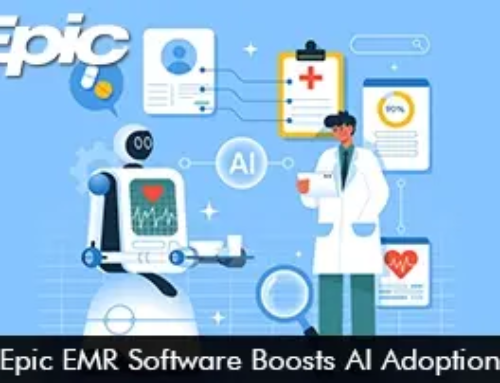EMR software has continued to play a pivotal role in the digitization and optimization of healthcare practices this year. By improving patient care, data management, and administrative processes, it has been a good year for electronic health records (EHR). As 2023 winds to a close, let’s recap the key developments, challenges, and emerging trends of Electronic Medical Records (EMR) software in 2023.
Advancements in EMR Software in 2023
Enhanced Interoperability – Healthcare providers have become increasingly connected through EMR software that seamlessly exchanges patient data and clinical information. This has improved care coordination but also reduced data silos, enhancing the quality and efficiency of healthcare delivery.
Artificial Intelligence and Machine Learning Integration – In 2023, AI-driven features became more prevalent. Some of the features include predictive analytics for early disease detection and advanced clinical decision support systems. These assist healthcare providers in making more informed decisions.
Telehealth Integration – In 2023, EMR software has made significant strides in integrating telehealth capabilities. Healthcare providers conduct remote consultations and monitor patient vitals. Telehealth integration enhances access to care, especially for patients in underserved or remote areas.
Patient Engagement Tools – EMR software has continued to prioritize patient engagement. Patient portals, secure messaging, and educational resources empower patient participation in their healthcare. Patients can access their health records, schedule appointments, and communicate with their healthcare providers.
Wearable Technology Integration – Fitness trackers and smartwatches have gained significant popularity among consumers. EMR software integration with these devices allows healthcare providers to capture and monitor patient-generated health data.
Voice Recognition and Virtual Scribes – 2023 saw the incorporation of voice recognition technology in EMR software. Dictating clinical notes and patient information directly into the system saves time and reduces the risk of errors associated with manual data entry.
Population Health Management – EMR software is evolving to support population health management initiatives. These systems analyze patient data to identify at-risk populations and assess the effectiveness of care programs. Population health management has helped healthcare organizations address the health needs of their communities.
Predictive Analytics for Resource Allocation – By analyzing patient data, predictive analytics predicts future patient volumes, resource requirements, and potential bottlenecks in care delivery. This allows healthcare organizations to optimize resource allocation and ensure that patients receive timely care.
Challenges and Considerations
While EMR software has made significant progress in 2023, several challenges and considerations are worth noting:
Data Security Concerns – Healthcare organizations store vast amounts of sensitive patient information in EMR software. Therefore, data security is a primary concern. The risk of data breaches and cyberattacks remains, necessitating ongoing investment in advanced security measures.
Usability and Training – The usability of EMR software and the learning curve for healthcare providers can be significant challenges. It’s essential to ensure that EMR software is intuitive and that healthcare professionals receive adequate training to maximize its benefits.
Regulatory Compliance – Staying compliant with healthcare regulations, including HIPAA in the United States, is essential. Healthcare organizations must navigate a complex regulatory landscape while using EMR software to ensure patient data privacy and security.
Data Integration – The integration of diverse data sources into EMR systems remains a challenge. EMR software needs to handle data from various departments, tests, and diagnostic tools, making interoperability a complex issue.
Costs and Resource Allocation – Implementing and maintaining EMR software can be expensive, particularly for smaller healthcare practices. Resource allocation and budgeting are ongoing considerations to ensure the sustainability of EMR technology.
Emerging Trends in EMR Software for 2024 and Beyond
As we move forward into 2024 and beyond, several emerging trends in EMR software are poised to shape the future of healthcare:
Artificial Intelligence Advancements: AI will continue to evolve in healthcare, enhancing diagnostic accuracy, predictive analytics, and personalized treatment plans.
Voice-Activated Virtual Assistants: The integration of voice-activated virtual assistants into EMR software will streamline tasks for healthcare providers, such as note-taking and data retrieval.
Blockchain for Data Privacy: Blockchain technology is expected to play a more significant role in securing patient data and providing patients with greater control over their health information.
Population Health Analytics: Advanced analytics and data-driven strategies will enable healthcare organizations to manage population health more effectively, leading to better preventive care and cost savings.
Telehealth Expansion: Telehealth services will continue to expand, offering more comprehensive solutions and integrating seamlessly with EMR systems.
Enhanced Mobile Accessibility: EMR software will prioritize mobile accessibility, allowing healthcare providers to access patient records and input data from any location within their facilities.
Data-Driven Decision-Making: The use of data analytics for research and analysis will continue to grow, leading to more informed decisions and the development of better healthcare strategies.
Global Interoperability: The standardization of data formats and healthcare information exchange will become more global, allowing for better coordination of care between countries.








